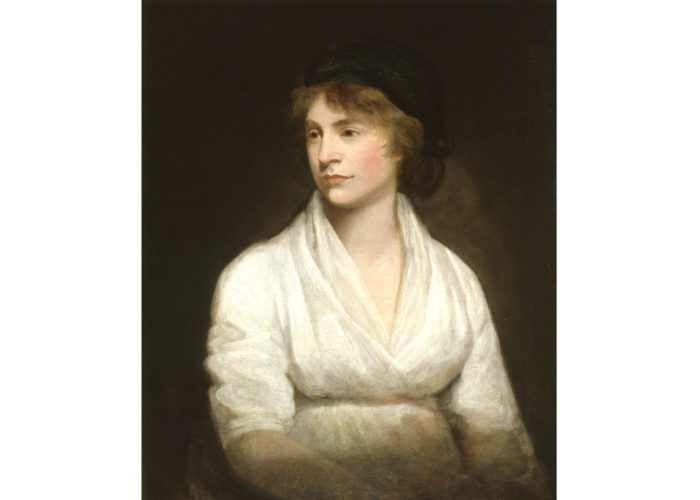Portrait of Mary Wollstonecraft
Theme: Revolutionary ideas, Political Revolution, Printing revolution
Mary Wollstonecraft was a revolutionary writer who made a powerful case for educating and emancipating women. She is still regarded as one of the founders of modern British feminism.
Mary was born in London in 1759. Her father was abusive, wasted the family’s money and was given to drunken rages. As a young woman, Mary challenged many social conventions of the time. She encouraged her sister to flee her unhappy marriage, co-founded a school for girls and was determined to earn her own living. She went on to become a supporter of the French Revolution’s ideals of equality and liberty, and to achieve her ‘radical’ goal of becoming what she described as a ‘new genus’ – a self-supporting, female writer.
The work presented a vision of equality for men and women – both in the home and in the wider world.
In 1792, Mary published her most famous work: A Vindication of the Rights of Woman. The work presented a vision of equality for men and women – both in the home and in the wider world. The key, she argued, was for women to have access to the same education as men. Her ideas still resonate with readers today. At the time, however, Wollstonecraft was criticised by many for holding unorthodox views and her initial support of the French Revolution and her personal life were used to taint her reputation.
In this painting, the artist John Opie portrays Mary honestly and with the utmost simplicity. When it was painted, she was pregnant with her second daughter – also called Mary. She died of septicaemia shortly after her daughter’s birth in 1797. Mary Wollstonecraft’s life was revolutionary, in her rejection of convention, her success as a self-supporting female writer and in her advocacy for the rights of women.
Did you know..?
Mary Wollstonecraft’s daughter (with the philosopher William Godwin) would become Mary Shelley – the famous author of Frankenstein.
Sources & acknowledgements
This object description and its related educational resources were researched and written by our team of historians and education specialists. For further information see the item’s home museum, gallery or archive, listed above.
-
Did you know..?
Mary Wollstonecraft’s daughter (with the philosopher William Godwin) would become Mary Shelley – the famous author of Frankenstein.
-
Education overview
You can access a range of teachers resources related to this object and more on our education page.
Please also see our glossary of terms for more detailed explanations of the terms used.
-
Curatorial info
- Originating Museum: National Portrait Gallery
- Accession Number: NPG 1237
- Production Date: c. 1797
- Creator: John Opie
- Technique: Oil on canvas
- Size: 30 1/4 in. x 25 1/4 in. (768 mm x 641 mm)
- Original record
-
Use this image
You can download this image for personal and educational use but please take note of the license type below.
- Rights Holder: National Portrait Gallery, London
- License Type:
Find it here
This object is in the collection of National Portrait Gallery



